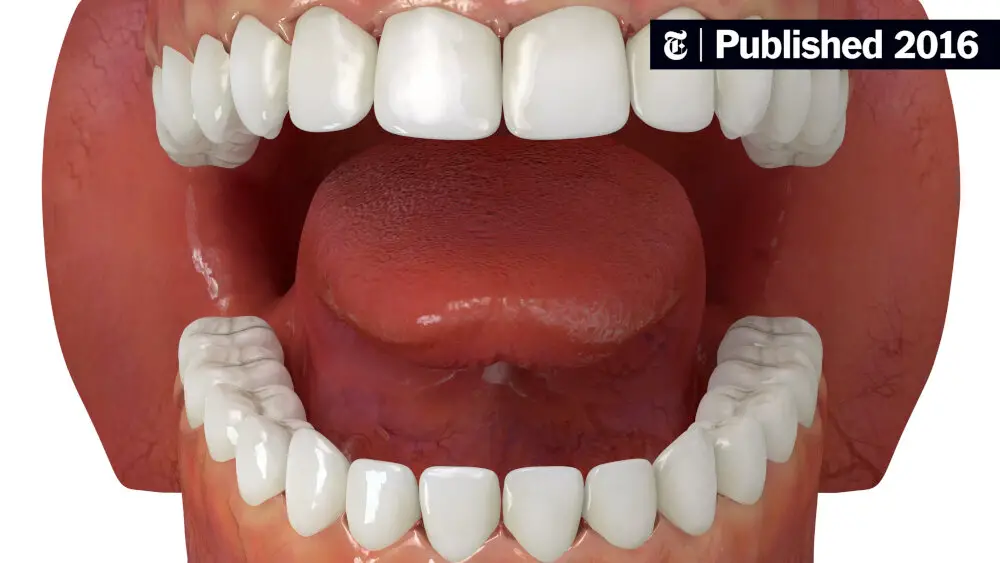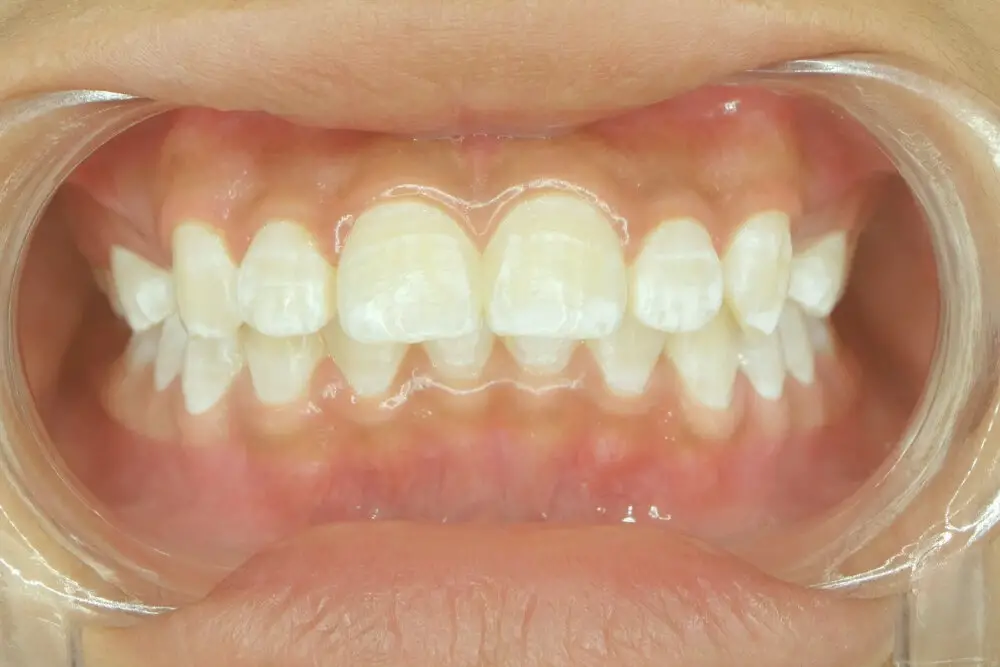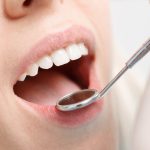Understanding Decalcification of Teeth: Causes and Prevention Tips

Decalcification of teeth is a common dental problem that affects people of all ages. It is the early stage of tooth decay, and if left untreated, it can lead to cavities, gum disease, and even tooth loss. Decalcification occurs when the minerals that make up the teeth are lost, leaving behind a white or chalky appearance on the enamel surface. Understanding the causes and prevention tips of decalcification is essential to maintain good oral health and prevent more severe dental problems. Several factors can contribute to the decalcification of teeth, including poor oral hygiene, high sugar intake, and certain medical conditions. Poor oral hygiene can lead to the buildup of plaque, a sticky film of bacteria that can erode the enamel and cause decalcification. Sugary and acidic foods and drinks can also weaken the enamel and make it more susceptible to decay. Certain medical conditions, such as dry mouth or acid reflux, can also increase the risk of decalcification. Fortunately, many preventative measures can be taken to avoid tooth decalcification, and early detection can help in reversing the process.
Decalcification is a dental condition characterized by the loss of minerals, such as calcium and phosphorus, from the teeth’s enamel. This condition is usually caused by the accumulation of plaque on the teeth, which produces acids that erode the enamel’s mineral content. Decalcification can also be caused by poor oral hygiene, frequent consumption of acidic foods and drinks, and certain medical conditions, such as dry mouth or orthodontic treatment. The loss of minerals weakens the enamel, making it more susceptible to decay and cavities. To prevent decalcification, it is essential to maintain good oral hygiene, limit the consumption of sugary and acidic foods and drinks, and visit the dentist regularly for professional cleanings and check-ups.
Understanding decalcification is crucial for maintaining optimal oral health. This process involves the loss of minerals, such as calcium and phosphate, from the tooth enamel, which can result in white spots, cavities, and other dental problems. Decalcification can be caused by a variety of factors, including poor oral hygiene, a high-sugar diet, and certain medical conditions or medications. By understanding the causes of decalcification, individuals can take proactive measures to prevent it, such as practicing good oral hygiene habits, limiting sugary foods and drinks, and seeking treatment for underlying medical conditions. With proper care and attention, individuals can protect their teeth from decalcification and maintain a healthy, beautiful smile.
Causes of Decalcification

Decalcification of teeth is a common dental issue that can lead to tooth decay, cavities, and other oral health problems. Decalcification occurs when the enamel on the teeth breaks down, causing a loss of calcium and other minerals that make teeth strong. There are several causes of decalcification, including poor oral hygiene, a high sugar diet, and certain medical conditions. Poor oral hygiene is one of the leading causes of decalcification. When plaque and bacteria build up on the teeth, it can lead to the breakdown of enamel and the loss of minerals. Brushing and flossing regularly can help remove plaque and prevent the buildup of bacteria. Additionally, using fluoride toothpaste and mouthwash can help strengthen teeth and prevent decalcification. A high sugar diet is another common cause of decalcification. When sugar and other carbohydrates are left on the teeth, they can feed bacteria and lead to the production of acids that break down enamel. Reducing the amount of sugar in the diet and avoiding sugary drinks can help prevent decalcification.
Poor oral hygiene is a major contributor to decalcification of teeth, a process in which the enamel on the teeth begins to break down due to acid erosion. When plaque builds up on the teeth, it creates an acidic environment that can wear away at the enamel, leading to white spots, cavities, and eventually decay. Failure to brush and floss regularly, as well as neglecting to visit the dentist for routine cleanings and checkups, can all contribute to poor oral hygiene. Additionally, consuming sugary or acidic foods and beverages can also contribute to the erosion of enamel. To prevent decalcification of teeth, it is crucial to maintain good oral hygiene habits and limit consumption of harmful foods and drinks.
High sugar intake is one of the leading causes of decalcification of teeth. When you consume sugary foods and drinks, the bacteria in your mouth feed on the sugar and produce acid. This acid can erode the enamel of your teeth, causing them to become weaker and more susceptible to decay. To prevent this, it’s important to limit your sugar intake and practice good oral hygiene. Brushing twice a day, flossing daily, and using fluoride toothpaste can help strengthen your enamel and protect your teeth from demineralization. Additionally, drinking plenty of water and avoiding sugary snacks and drinks can go a long way in maintaining your oral health.
Acidic foods and beverages are one of the most common causes of tooth decalcification. These types of foods and drinks, such as citrus fruits, soda, and sports drinks, contain high levels of acid that can weaken the enamel on your teeth. When the enamel is weakened, it becomes more susceptible to decay and erosion. It is important to limit your consumption of acidic foods and drinks and ensure that you maintain good oral hygiene practices to prevent tooth decalcification. Regular brushing and flossing, as well as using fluoride toothpaste, can help to strengthen your teeth and protect them from acid damage.
Orthodontic treatment is a specialized dental procedure that aims to correct the alignment of teeth and jaws. It involves the use of braces, aligners, and other dental appliances to straighten crooked or misaligned teeth, close gaps, and improve bite function. While orthodontic treatment can greatly enhance the appearance of teeth, it is also important to note that it can increase the risk of decalcification, which is the loss of minerals from the tooth enamel. This occurs if plaque and bacteria are not properly removed from the teeth during treatment, leading to the formation of white spots and cavities. Therefore, it is essential to maintain good oral hygiene habits, such as brushing and flossing regularly, to minimize the risk of decalcification during orthodontic treatment.
Dry mouth, also known as xerostomia, is a common condition that occurs when there is not enough saliva in the mouth. Saliva plays a crucial role in maintaining oral health by neutralizing acids produced by bacteria, washing away food particles and debris, and aiding in digestion. Without enough saliva, a person may experience difficulty chewing, swallowing, and speaking. Dry mouth can also lead to bad breath, a sore throat, and an increased risk of tooth decay and gum disease. There are several possible causes of dry mouth, including medications, medical conditions, and lifestyle factors. However, there are numerous ways to manage this condition, including staying hydrated, avoiding tobacco and alcohol, and using saliva substitutes or prescription medications.
Prevention Tips for Decalcification

Decalcification of teeth is a common dental problem that can lead to tooth decay and cavities. Fortunately, there are several prevention tips that can help you avoid this issue. Firstly, maintaining a good oral hygiene routine is crucial for preventing decalcification. This includes brushing your teeth twice a day with fluoride toothpaste, flossing daily, and using mouthwash to kill bacteria in your mouth. Additionally, it’s important to avoid sugary and acidic foods and drinks, which can erode your tooth enamel and cause decalcification. Instead, opt for a healthy, balanced diet that’s rich in fruits, vegetables, and whole grains. Another important prevention tip for decalcification is to get regular dental checkups and cleanings. Your dentist can identify early signs of decalcification and provide treatment to prevent it from getting worse. They can also remove plaque and tartar buildup, which can contribute to decalcification. If you wear braces, it’s especially important to practice good oral hygiene and visit your orthodontist regularly to ensure that your teeth and braces are clean and healthy. By following these prevention tips, you can keep your teeth strong and healthy and avoid the pain and discomfort of decalcification.
Brushing and flossing regularly are essential habits for maintaining healthy teeth and preventing decalcification. Brushing your teeth twice a day with fluoride toothpaste helps to remove plaque and other harmful substances from your teeth, while flossing daily helps to remove plaque and food particles from between your teeth and gums. Additionally, using mouthwash can help to kill bacteria that can cause tooth decay and gum disease. It’s important to brush and floss properly to ensure that you’re cleaning your teeth effectively. By making brushing and flossing a regular part of your daily routine, you can help to prevent decalcification of your teeth, as well as other dental problems like cavities and gum disease.
Limiting sugar intake is crucial for maintaining good oral health and preventing decalcification of teeth. Consuming excess sugar can lead to the production of harmful acids in the mouth that can erode the enamel of teeth, leading to cavities and decalcification. Foods and drinks with high sugar content should be limited or avoided altogether, while healthier alternatives such as fruits, vegetables and water should be incorporated into the diet. It is also important to maintain good oral hygiene practices such as brushing and flossing regularly, and visiting the dentist for regular check-ups and cleanings. By taking these steps to limit sugar intake, individuals can help prevent decalcification and maintain strong, healthy teeth.
Decalcification of teeth can be caused by various factors, including poor oral hygiene and consuming acidic foods and beverages. To prevent decalcification, it is important to avoid or limit acidic foods and beverages such as citrus fruits, soft drinks, sports drinks, and vinegar-based dressings. These foods and beverages can erode enamel, leading to decalcification and other dental problems. It is also important to maintain good oral hygiene practices, such as brushing twice a day and flossing regularly, to remove plaque and prevent the buildup of harmful bacteria that can contribute to decalcification. In addition, regular dental checkups and cleanings can help identify and treat early signs of decalcification before they become more serious issues.
Using fluoride toothpaste is an essential step in preventing decalcification of teeth. Fluoride is a mineral that helps to strengthen tooth enamel and make it more resistant to acid attacks from bacteria in the mouth. Fluoride toothpaste works by restoring lost minerals in the enamel and preventing the formation of cavities. It is recommended to use a pea-sized amount of toothpaste containing fluoride twice daily, especially after meals. Children under the age of six should use a minimal amount of toothpaste and be supervised to prevent swallowing. Additionally, it is essential to maintain a healthy diet, limit sugary and acidic foods, and visit the dentist regularly to prevent decalcification and maintain good oral hygiene.
Staying hydrated is essential for overall health, but it is also crucial for maintaining good oral health. Dehydration can lead to a decrease in saliva production, which can cause dry mouth and increase the risk of tooth decay and decalcification. Drinking plenty of water throughout the day can help keep the mouth hydrated and flush away harmful bacteria and acids that can erode tooth enamel. Additionally, avoiding sugary drinks and acidic beverages, such as soda and sports drinks, can help prevent tooth decalcification and other dental issues. Making hydration a priority can not only benefit your overall health, but it can also protect your teeth and keep your smile healthy and bright.
Treatment Options for Decalcification

Decalcification of teeth is a common dental problem that can lead to tooth decay, discoloration, and other serious oral health issues. Fortunately, there are several effective treatment options available to help reverse and prevent decalcification. One of the most common treatments is fluoride therapy, which involves the application of fluoride gel or varnish to the teeth to help remineralize them and strengthen their enamel. Fluoride therapy can be done in the dentist’s office or at home using over-the-counter products such as toothpaste and mouthwash. However, it is important to use fluoride products as directed and not overdo it, as excessive fluoride intake can lead to fluorosis and other complications. Another treatment option for decalcification is dental bonding, which involves the application of tooth-colored resin to the affected teeth to help restore their appearance and strength. Dental bonding is a non-invasive and affordable procedure that can be done in a single visit to the dentist’s office. However, it is important to note that dental bonding is not a permanent solution and may need to be replaced over time. In some cases, more extensive dental work such as crowns or veneers may be necessary to fully restore the appearance and function of decalcified teeth. Ultimately, the best treatment option for decalcification will depend on the severity of the condition and the individual patient’s needs and preferences.
Dental bonding is a popular cosmetic dentistry procedure that involves the application of a tooth-colored resin material to the surface of a tooth. This procedure is often used to repair chipped, cracked, or discolored teeth, and can also be used to close gaps between teeth or to change the shape or size of teeth. The process involves the dentist first preparing the tooth surface by roughening it and then applying the bonding material, which is then hardened with a special light. Dental bonding is a relatively quick and painless procedure that can provide a significant improvement in the appearance of teeth. However, it is important to note that bonding material is not as strong as natural tooth enamel and may require replacement after a few years.
Veneers are thin shells made of porcelain or composite resin that are custom-made to fit over the front surface of a tooth. They are used to improve the appearance of teeth that are discolored, chipped, or misshapen. Veneers are a popular cosmetic dental procedure because they can provide a natural-looking and durable solution for many dental problems. However, it is important to note that veneers do not prevent decalcification of teeth and may even make the problem worse if proper oral hygiene is not maintained. Regular brushing, flossing, and dental check-ups are essential for maintaining healthy teeth and preventing decalcification.
Microabrasion is a minimally invasive dental treatment that helps to remove superficial stains and discoloration from the surface of the teeth. It involves using a combination of mild acid and abrasive particles to gently polish the outermost layer of the enamel. This technique is particularly effective for removing white spot lesions caused by decalcification, which can be a common issue for people who wear braces or have poor oral hygiene. Microabrasion is a quick and painless procedure that can be performed in a dental office, and it can help to improve the appearance of discolored teeth without the need for more invasive treatments such as veneers or crowns.
Fluoride treatment is a preventive technique that helps to strengthen the tooth enamel and protect it from decay. It involves applying a concentrated dose of fluoride to the teeth, either as a gel, foam, or varnish. Fluoride works by remineralizing the teeth, replacing the minerals that have been lost due to acid erosion and reducing the risk of cavities. This treatment is particularly beneficial for those who are at high risk of tooth decay, such as children, individuals with braces, and people with dry mouth. Fluoride treatment is a safe and effective method of protecting teeth from decalcification and preserving oral health.
The decalcification of teeth is a common dental issue that occurs when the enamel on the surface of teeth starts to dissolve, leading to white spots and eventual cavities. The main cause of decalcification is poor oral hygiene, which allows plaque to build up on teeth and produce acid that eats away at the enamel. Other factors that contribute to decalcification include a high-sugar diet, acidic foods and drinks, dry mouth, and orthodontic treatment with brackets and wires that make it difficult to clean teeth properly. To prevent decalcification, it’s essential to maintain good oral hygiene habits, limit sugary and acidic foods and drinks, and visit the dentist regularly for cleanings and check-ups.
Prevention is crucial in maintaining good oral health and preventing dental problems such as decalcification of teeth. Decalcification occurs when the enamel on teeth begins to dissolve due to the loss of minerals, leading to permanent damage. Preventative measures such as maintaining good oral hygiene by brushing twice a day, flossing daily, and visiting the dentist regularly can help prevent the onset of decalcification. Additionally, consuming a healthy diet low in sugary foods and drinks can also contribute to the prevention of decalcification. By taking preventative measures, individuals can protect their teeth from harm and maintain a healthy, bright smile.
Regular dental checkups are crucial for maintaining good oral health and preventing the decalcification of teeth. While it may be tempting to skip routine dental visits, doing so can lead to a host of dental problems, including decay, gum disease, and enamel erosion. By visiting a dentist regularly, you can ensure that any potential issues are caught early on and treated before they become more serious. In addition, your dentist can provide valuable advice on how to care for your teeth and gums at home, including brushing and flossing techniques and the use of fluoride products. So, don’t wait until you experience dental pain or discomfort to visit your dentist. Make it a priority to schedule regular checkups and cleanings to keep your smile healthy and beautiful for years to come.
Conclusion

In conclusion, decalcification of teeth is a common problem that affects many people, especially those who do not take good care of their oral hygiene. The main causes of decalcification include poor dental hygiene, consumption of sugary and acidic foods, and prolonged use of orthodontic appliances. However, the good news is that decalcification can be prevented through regular brushing and flossing, avoiding sugary and acidic foods, and seeking dental check-ups. It is important to note that decalcification can lead to other dental problems such as cavities, tooth decay, and gum disease if left untreated. Therefore, taking preventive measures against decalcification should be a top priority for everyone who values good oral health. Overall, understanding the causes and prevention tips of decalcification of teeth is crucial for maintaining healthy teeth and a bright smile. By following the recommended preventive measures, we can protect our teeth from decalcification and other dental problems, ensuring a lifetime of healthy teeth and gums.







